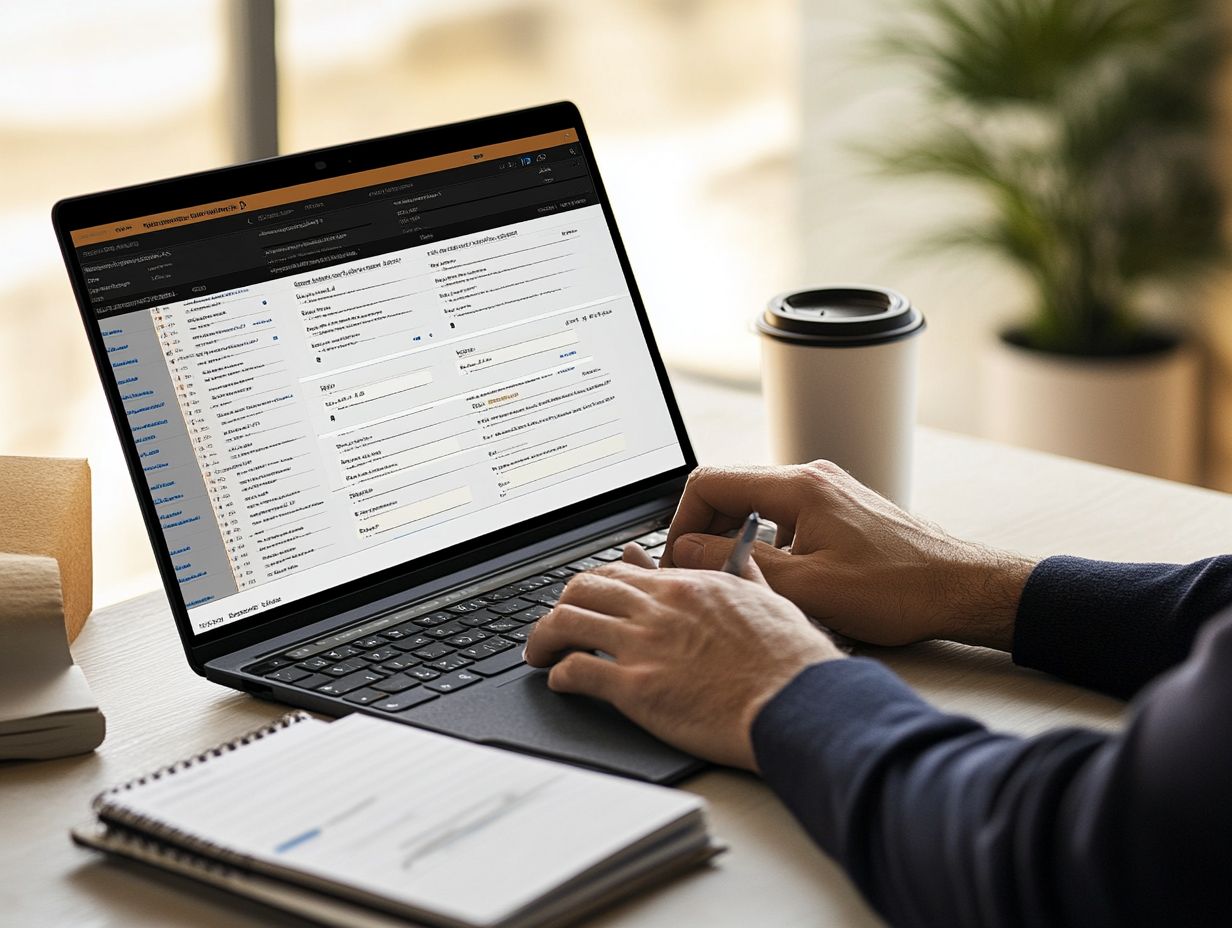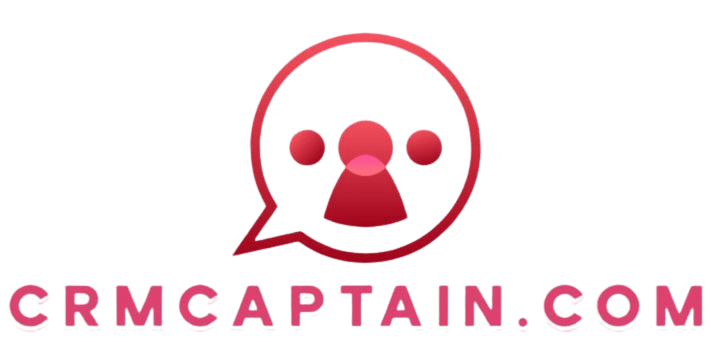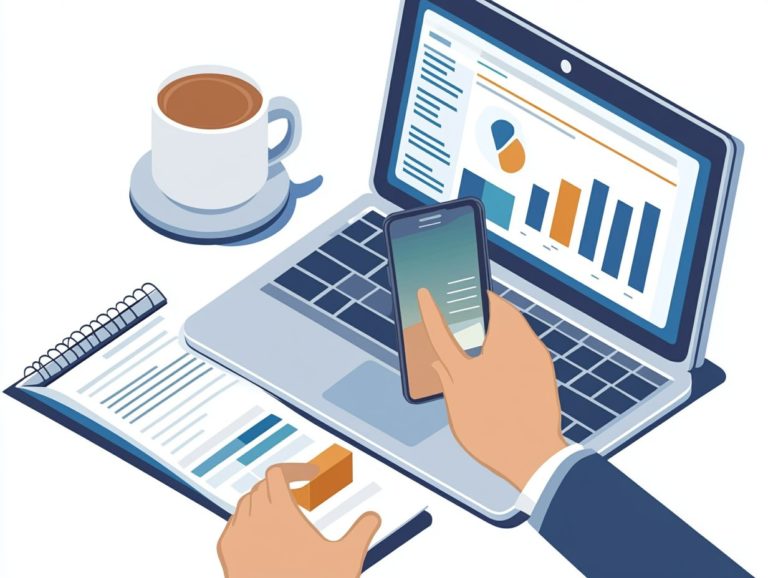How to Create a CRM User Manual
In today s fast-paced business environment, understanding customer relationship management (CRM) can truly transform your organization.
Get ready to dive into this guide that will help you navigate the essentials of CRM, starting from creating your user account to customizing your dashboard just the way you like it. You ll discover how to manage your contacts and leads efficiently while also exploring advanced features like automation and analytics.
You ll find troubleshooting tips and customer support options to ensure your experience is as seamless as possible. Whether you re just starting out or looking to enhance your CRM skills, this guide is tailored for you.
Contents
- Key Takeaways:
- Getting Started with the CRM
- Customizing the CRM
- Managing Contacts and Leads
- Utilizing Advanced Features
- Troubleshooting and Support
- Frequently Asked Questions
- Q1: What is a CRM user manual and why is it important?
- Q2: How do I start creating a CRM user manual?
- Q3: What should be included in a CRM user manual?
- Q4: How should I organize the information in a CRM user manual?
- Q5: How often should a CRM user manual be updated?
- Q6: How can I make the CRM user manual more user-friendly?
Key Takeaways:

Purpose and Importance
Dynamic email signatures do more than look good; they enhance your brand s visibility. A well-crafted signature includes your contact info, social media links, and promotional messages, creating a cohesive brand identity.
An effective user manual simplifies the setup process for these signatures, making it easy for users to follow along. Clear language boosts comprehension and confidence in professional email correspondence.
Getting Started with the CRM
Your CRM journey begins with essential setup steps that maximize engagement. A clear user manual is key, providing easy-to-follow installation instructions. Additionally, knowing how to train employees on new CRM software can greatly enhance the overall experience.
By following these steps, you can integrate the CRM into your workflow and leverage its features for greater customer engagement.
Creating a User Account
Creating your user account is the first step in using the CRM. Follow the onboarding process carefully for a smooth experience with the step-by-step guide in the user manual.
You ll need to provide basic information like your name, email, and a password. Additional details about your company and role will help tailor your CRM experience.
Once your account is set up, refine your profile for a personalized dashboard that suits your tasks. This accuracy enhances future interactions and boosts the CRM s efficiency.
Navigating the CRM efficiently is essential for maximizing productivity. Grasping its basic functions can significantly elevate your experience.
A well-crafted user manual offers essential workflow drafts and interactive guides that spotlight key features. This ensures you feel confident using the platform.
Clear explanations of navigation tools can demystify complex processes, leading to a smoother, more effective user experience.
User feedback is pivotal in refining these navigation elements. When you encounter challenges or have suggestions about layout or functionality, your input can inspire impactful updates.
The CRM s navigation improves through real-time adjustments, allowing for more intuitive interactions. By fostering dialogue between developers and users like yourself, enhancements align closely with actual needs, paving the way for seamless operational flow.
Incorporate visual aids and interactive tutorials to strengthen your understanding and encourage deeper engagement with the system.
Customizing the CRM
Customizing the CRM lets you tailor your experience to align perfectly with your unique needs. This adaptability is a cornerstone of user-centric design.
Personalize your dashboard to enhance efficiency by presenting relevant information at a glance.
Integrate dynamic email signatures and thoughtful visual elements into your customization journey to elevate brand visibility while creating a more engaging experience.
Personalizing Your Dashboard

Personalizing your dashboard is a smart move that elevates your user experience by customizing the interface to meet your specific needs.
Leverage various customization tools to add widgets, rearrange components, and apply visual aids that present information clearly.
Customization options, like selecting different types of widgets for metrics or notifications, enable you to prioritize important information.
Adjusting your dashboard layout can significantly enhance information flow, making it easier to navigate and quickly act on insights. Such adaptations boost productivity and create a more engaging interface.
These tailored choices help you create a workspace that resonates with your workflow and preferences.
Creating Custom Fields and Layouts
Creating custom fields and layouts enhances your CRM’s adaptability to various business needs, resulting in a finely tuned data management system.
A well-crafted user manual guides you through this process, offering steps and formatting guidelines to ensure your customizations are functional and visually appealing.
Use these features to elevate data organization and boost overall workflow efficiency.
Identify specific data points crucial for your operations, focusing on information like customer preferences or interaction history.
For instance, incorporating a dropdown field for ‘Customer Status’ can streamline your communication and project management efforts.
Maintain a consistent naming convention for clarity and scalability as you grow. Highlight critical information to quickly visualize what matters most.
This customization meets diverse business requirements and enhances your experience, making interactions smoother and more intuitive.
Managing Contacts and Leads
Managing your contacts and leads effectively can supercharge your sales and customer relationships!
A well-crafted user manual serves as your roadmap, guiding you through adding, editing, and organizing your contacts. It ensures you make the most of features like lead tracking.
Address common issues and offer troubleshooting guidance to help you confidently navigate lead management complexities.
Your feedback is crucial share your ideas for improvements!
Adding and Editing Contacts
Adding and editing contacts is a crucial element of effective contact management within your CRM (Customer Relationship Management) software, which helps you manage interactions with customers. It demands your careful attention to detail.
A user manual typically outlines the necessary steps to input relevant information accurately. Additionally, tips for successful user training in CRM and having access to customer support are invaluable in resolving any issues that may arise, ultimately improving your CRM experience.
To streamline your data entry, adopt consistent naming conventions and categorize your contacts appropriately. This approach makes retrieval much easier down the line.
When you edit an existing contact, verify all information for accuracy. Even minor errors can lead to significant communication breakdowns.
Getting familiar with bulk editing tools can save you precious time when managing larger datasets. By implementing these practices, you ll boost your efficiency and enhance the integrity of your data within the system.
Many CRMs also provide tutorials that guide you through these steps. This makes your transition smoother and boosts your confidence as you navigate the platform.
Tracking and Converting Leads
Tracking and converting leads is a cornerstone of any CRM, requiring effective strategies to nurture potential customers throughout the sales funnel.
By leveraging lead tracking features, you can pinpoint key touchpoints and engagement metrics. A thoughtfully crafted user manual offers valuable insights into conversion strategies that optimize your efforts.
Incorporating user feedback into the CRM s functionality enhances its effectiveness. This identifies common challenges and refines the troubleshooting guide.
Effective lead management tools are essential for analyzing customer interactions and behaviors, enabling you to tailor your outreach efforts with precision.
By integrating automated workflows, you can ensure timely follow-ups with prospects, significantly boosting your conversion rates. Visual dashboards provide a comprehensive overview of sales progress, helping you easily identify trends and adjust your strategies as needed.
Embracing these features not only streamlines your sales process but also fosters stronger relationships with potential customers through personalized communication and targeted follow-ups.
Utilizing Advanced Features
Leveraging the advanced features within your CRM can greatly improve how you work and enhance decision-making processes. It s crucial for you to thoroughly explore these capabilities.
The automation and integration functionalities seamlessly streamline your workflows. Robust reporting and analytics tools deliver invaluable insights into your business performance.
By emphasizing user-centric design, these advanced features are not just functional; they re also tailored to meet your needs. They foster proactive engagement and amplify your brand visibility.
Automation and Integration

CRM automation and integration are game-changing tools that simplify intricate processes and enhance overall efficiency in your workflows.
By harnessing automation features, you can wave goodbye to repetitive tasks. Integration tools facilitate seamless connections with other software, boosting your productivity.
For example, platforms like Salesforce and HubSpot offer sophisticated automation options that manage email campaigns, track customer interactions, and generate reports, giving you back valuable time.
Integration with services such as Zapier allows you to link your CRM with various applications, automating data transfer between systems. This streamlined approach cuts down on manual data entry and significantly reduces the risk of errors.
To fully harness these capabilities, a user manual becomes an invaluable asset, providing comprehensive tutorials and insightful tips. You can refer to these guides to unlock the true potential of your CRM systems, leveraging automation and integration to cultivate better customer relationships and propel your business growth.
Start exploring these features now and watch your productivity soar!
Reporting and Analytics
Reporting and analytics tools in your CRM are key to understanding business performance. They guide your strategic decisions.
These features allow you to create reports that analyze trends. You can track important business metrics and get actionable recommendations.
A comprehensive user manual helps you navigate these reporting features. Customer support is readily available to resolve any issues, ensuring an optimal user experience.
These tools often come with customizable dashboards that visualize data through engaging graphs and charts. This makes complex information more digestible.
You can also harness predictive analytics to forecast future trends based on historical data, enabling you to make well-informed decisions.
Integration with other applications facilitates seamless data migration, enriching your reporting process. With dynamic data filtering options, you can easily segment information for deeper insights into specific metrics or customer segments, enhancing your strategic initiatives.
A robust CRM equipped with these reporting capabilities can significantly streamline your business operations and bolster targeted marketing efforts.
Troubleshooting and Support
Troubleshooting and support are vital elements of any CRM system. They allow you to address common issues swiftly and effectively.
A well-crafted troubleshooting guide enables you to resolve problems independently. It also equips customer support to assist you when necessary.
Paying attention to user feedback is crucial in fine-tuning these support systems. This ultimately elevates your overall experience and satisfaction.
Common Issues and Solutions
Common issues you might encounter while using the CRM can range from pesky technical glitches to simple user errors. That’s why it’s crucial to have a well-documented troubleshooting guide at your fingertips.
A user manual outlining frequent problems and their solutions enables you to tackle issues independently. Customer support remains on standby for more complex challenges.
You may face hurdles like difficulties in data entry, sluggish system performance, or syncing woes with third-party applications.
To minimize data entry errors, consider implementing auto-fill features or validation rules. These tools can streamline your processes and ensure accuracy.
If you notice performance lags, assess server capacity or regularly clear your cache. Syncing issues often boil down to verifying API connections or updating integration settings.
By employing these strategies, you can navigate your CRM experience with greater ease. Act quickly to optimize your CRM experience and boost productivity!
Contacting Customer Support
Getting help should be quick and easy! Our support team is ready to assist you at a moment’s notice.
A well-crafted user manual outlines the available support channels, including phone, email, and live chat options. This way, you can easily find the help you need.
With a thoughtfully structured troubleshooting guide, you can tackle minor issues on your own. This reduces the need for external support.
By providing multiple channels, customer support teams cater to your individual preferences. This makes the experience more convenient and user-friendly.
It s crucial to include clear instructions for each contact method in the user manual. This sets expectations for response times and available resources.
Integrating FAQs and support links directly into the troubleshooting guides enhances your experience. It also enables you to seek self-service solutions.
This comprehensive approach alleviates potential frustration and fosters your confidence in navigating challenges effectively.
Frequently Asked Questions
Q1: What is a CRM user manual and why is it important?

A CRM user manual is your go-to guide for using the CRM system. It helps new users learn about the features and serves as a handy reference for everyone. Additionally, understanding how to develop a CRM maintenance plan can enhance user experience and system efficiency.
Q2: How do I start creating a CRM user manual?
To create a CRM user manual, first, identify who will use it. Gathering all essential information about the CRM system and its features is crucial, and learning how to develop a CRM training plan can help streamline this process.
Then, organize this information clearly.
Q3: What should be included in a CRM user manual?
Include an overview of the system and its features. Provide instructions for common tasks and solutions for common problems.
Q4: How should I organize the information in a CRM user manual?
Organize the manual logically. Use sections, headings, and visuals like screenshots to guide users.
Q5: How often should a CRM user manual be updated?
Update the manual whenever the CRM system changes. Regular reviews ensure the information remains accurate and useful.
Q6: How can I make the CRM user manual more user-friendly?
Use simple language and include examples. A table of contents and index will help users navigate easily.
An online version with interactive features like video tutorials will enhance the experience!






